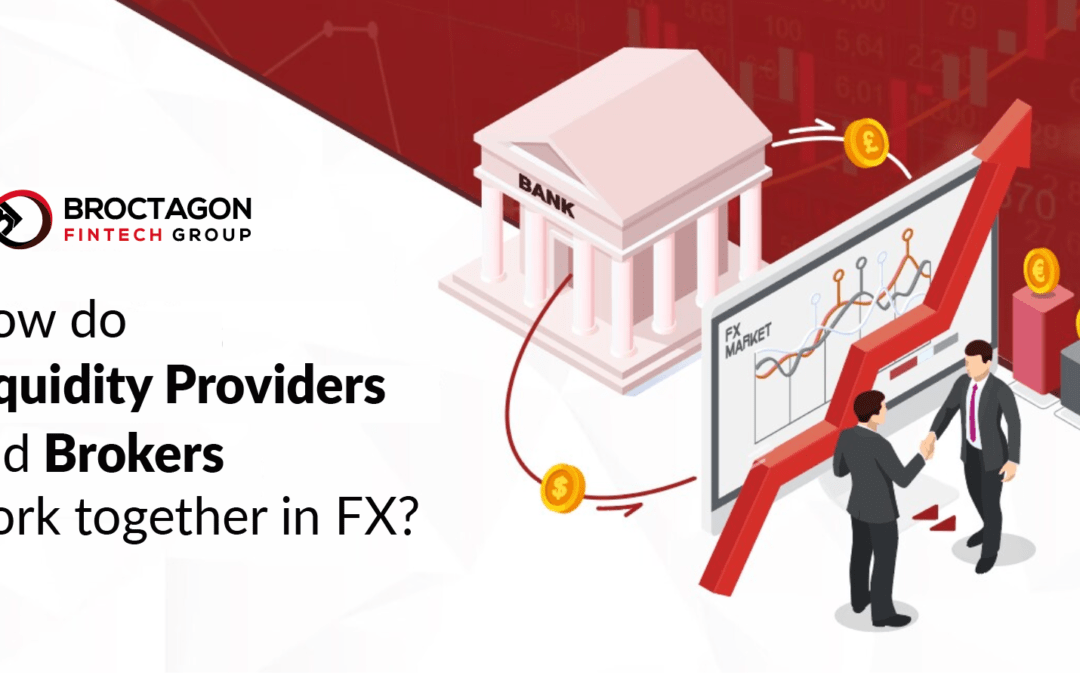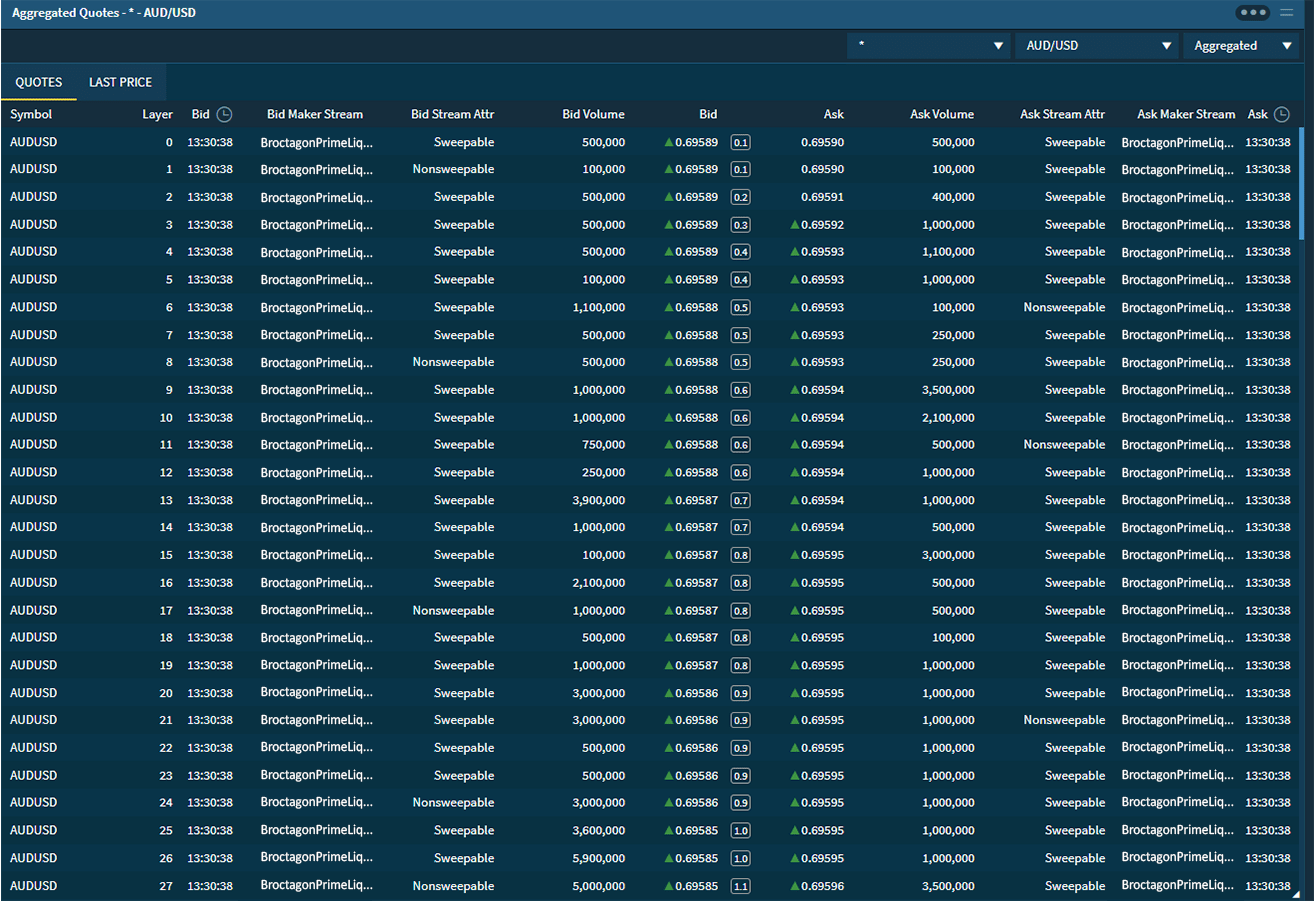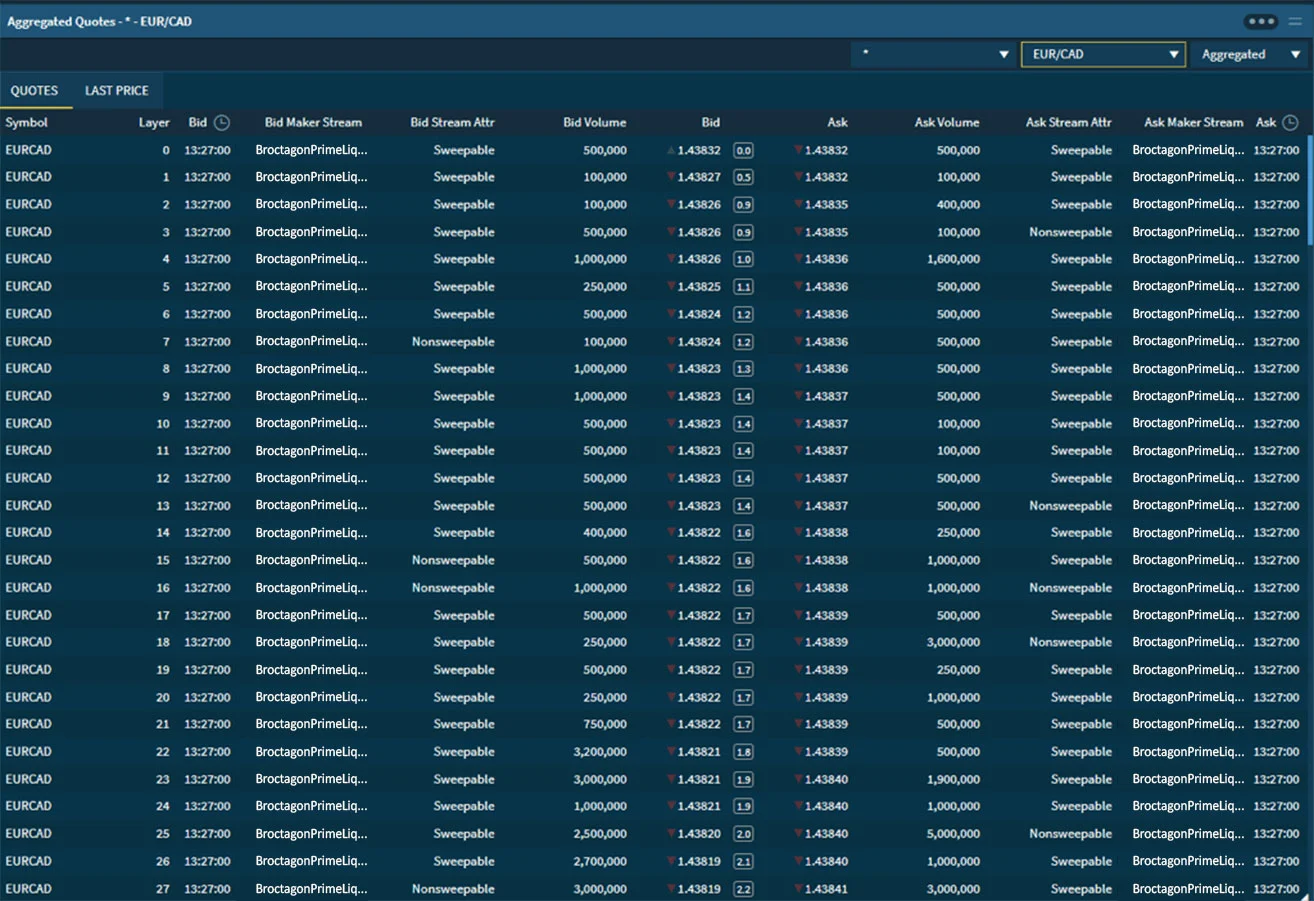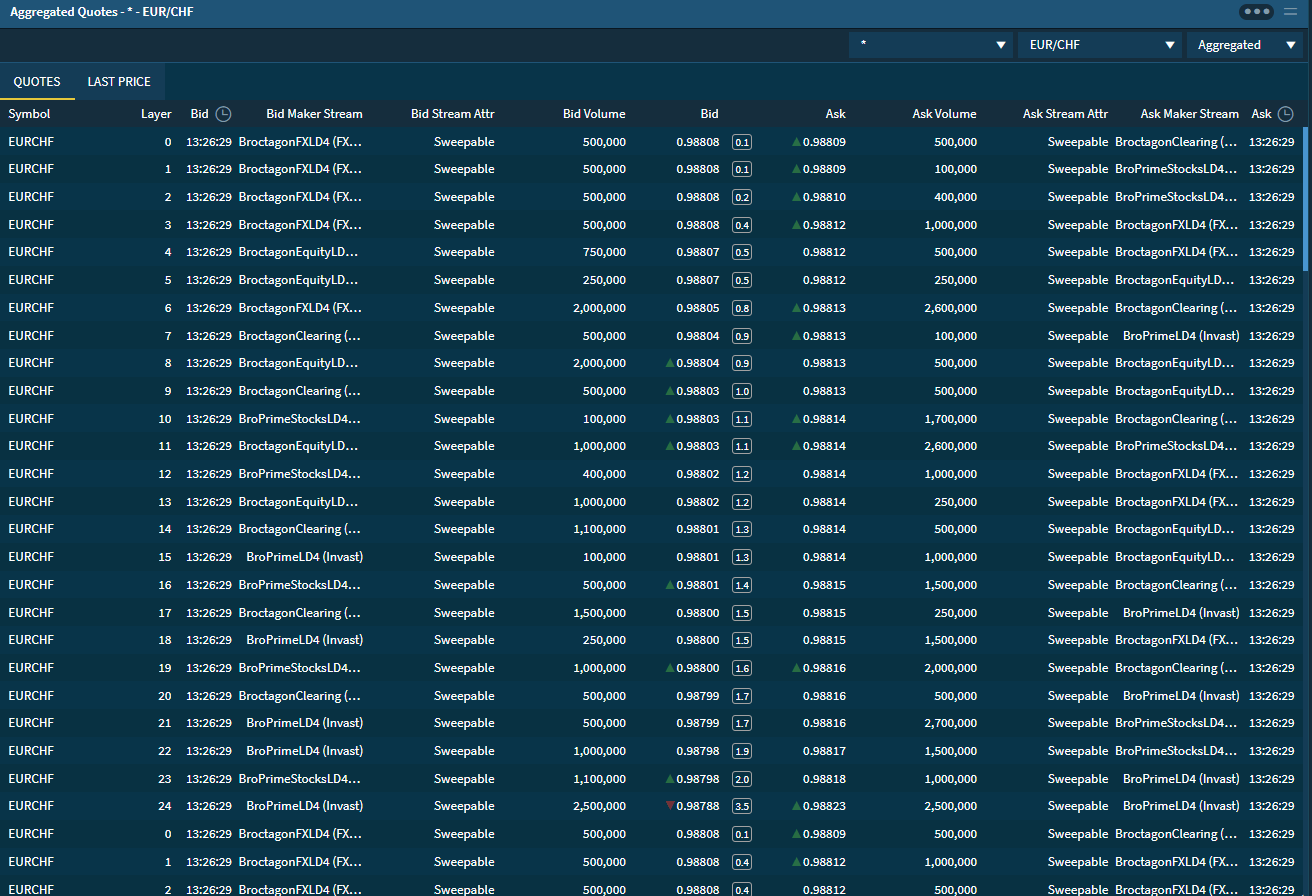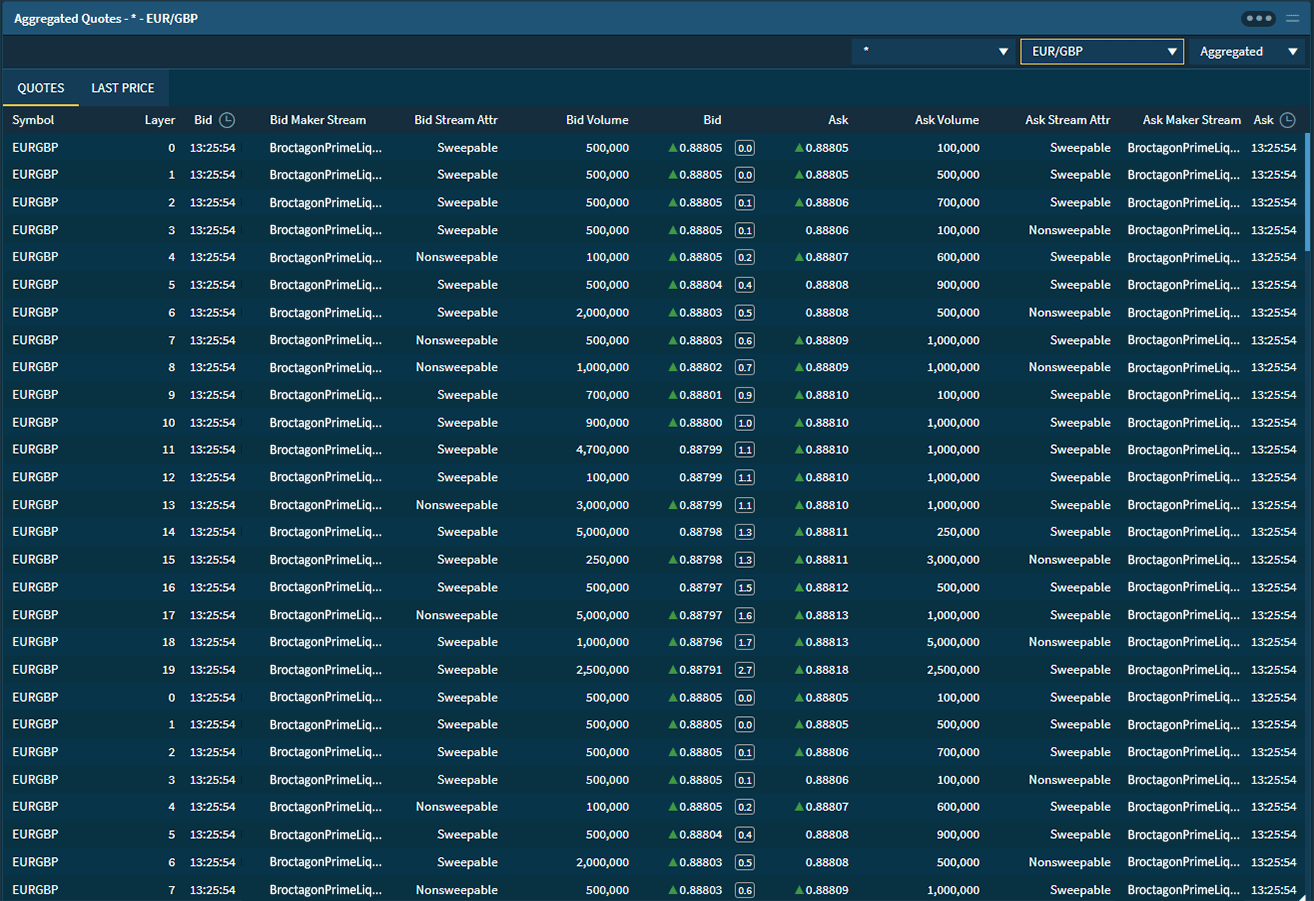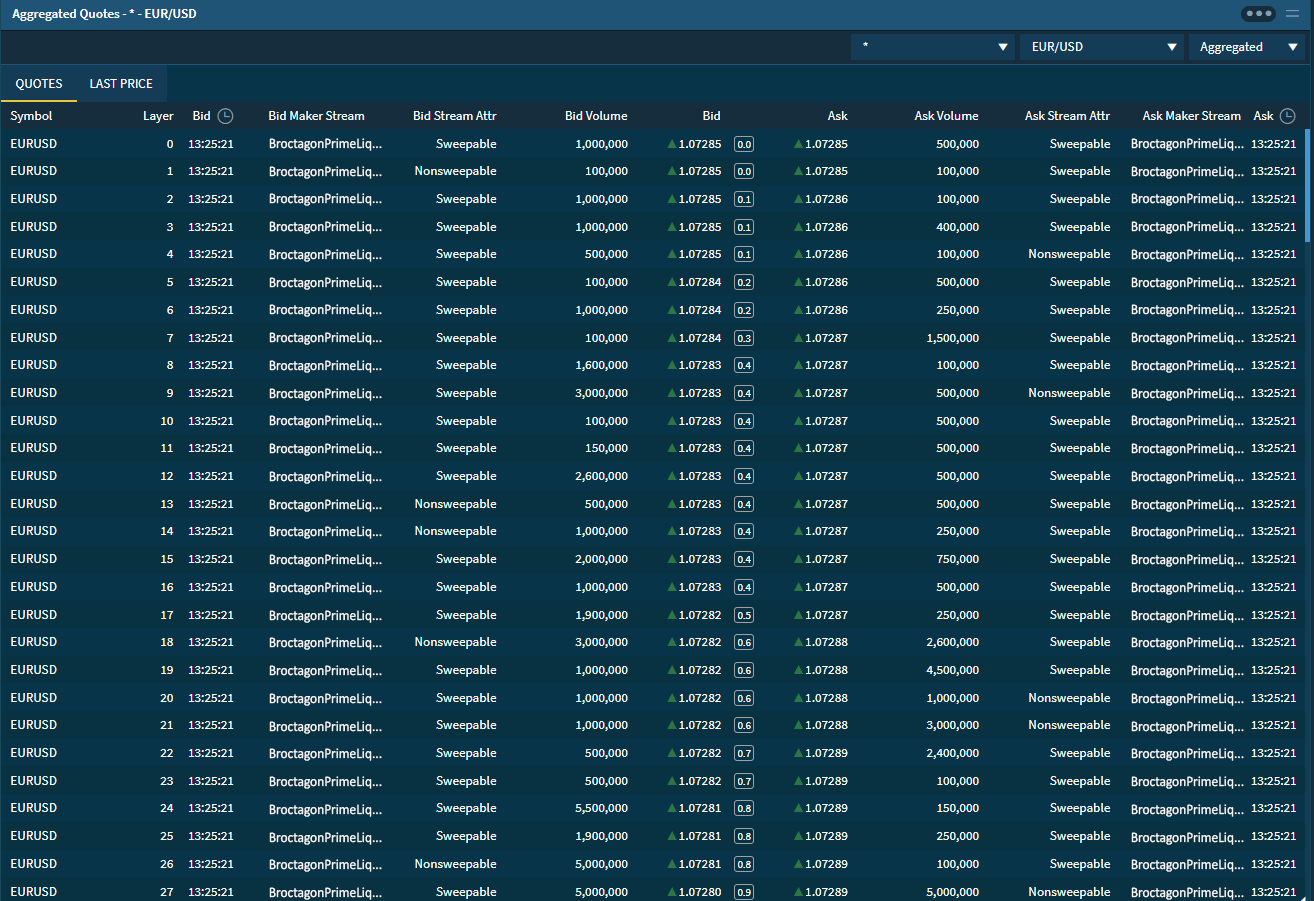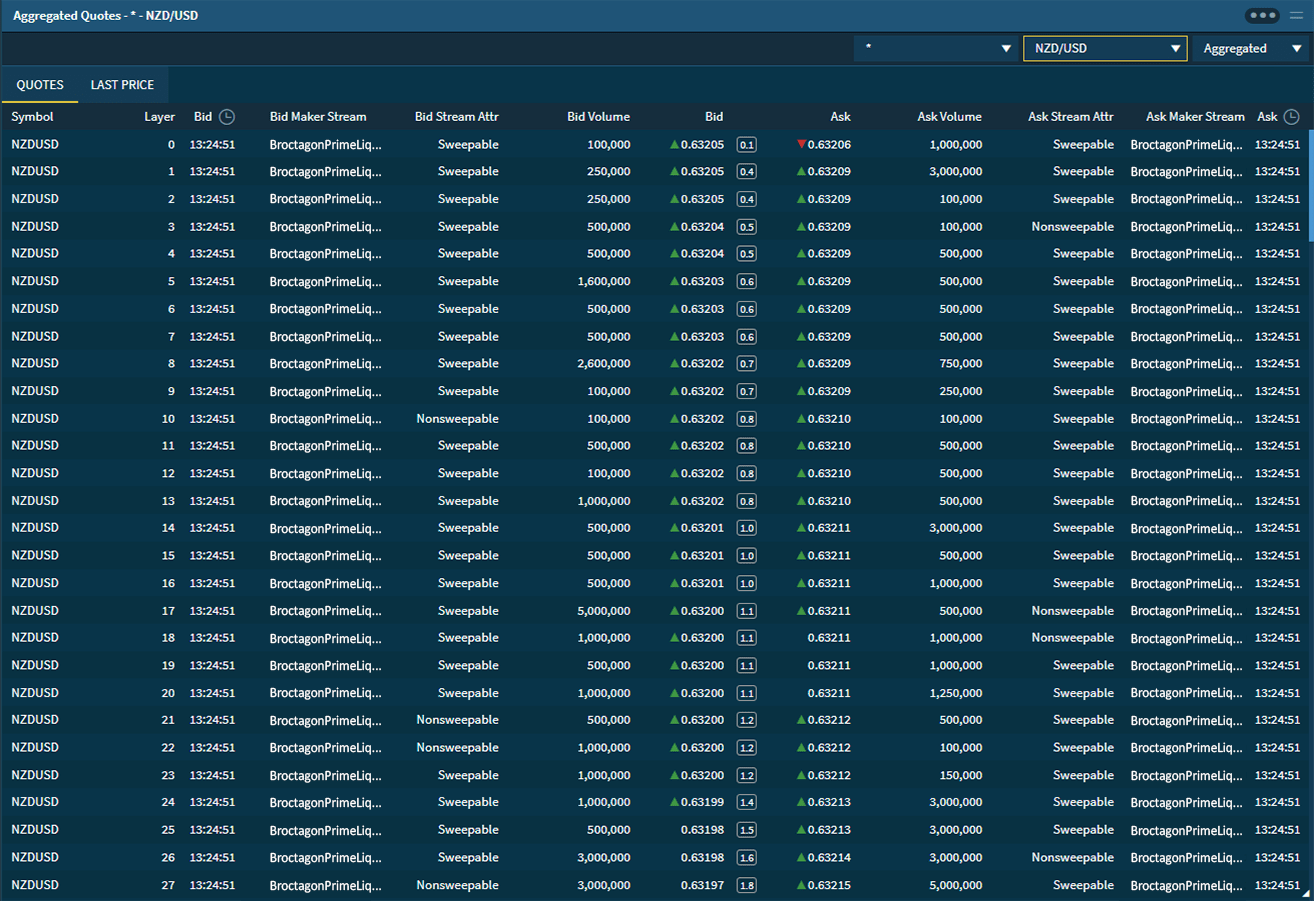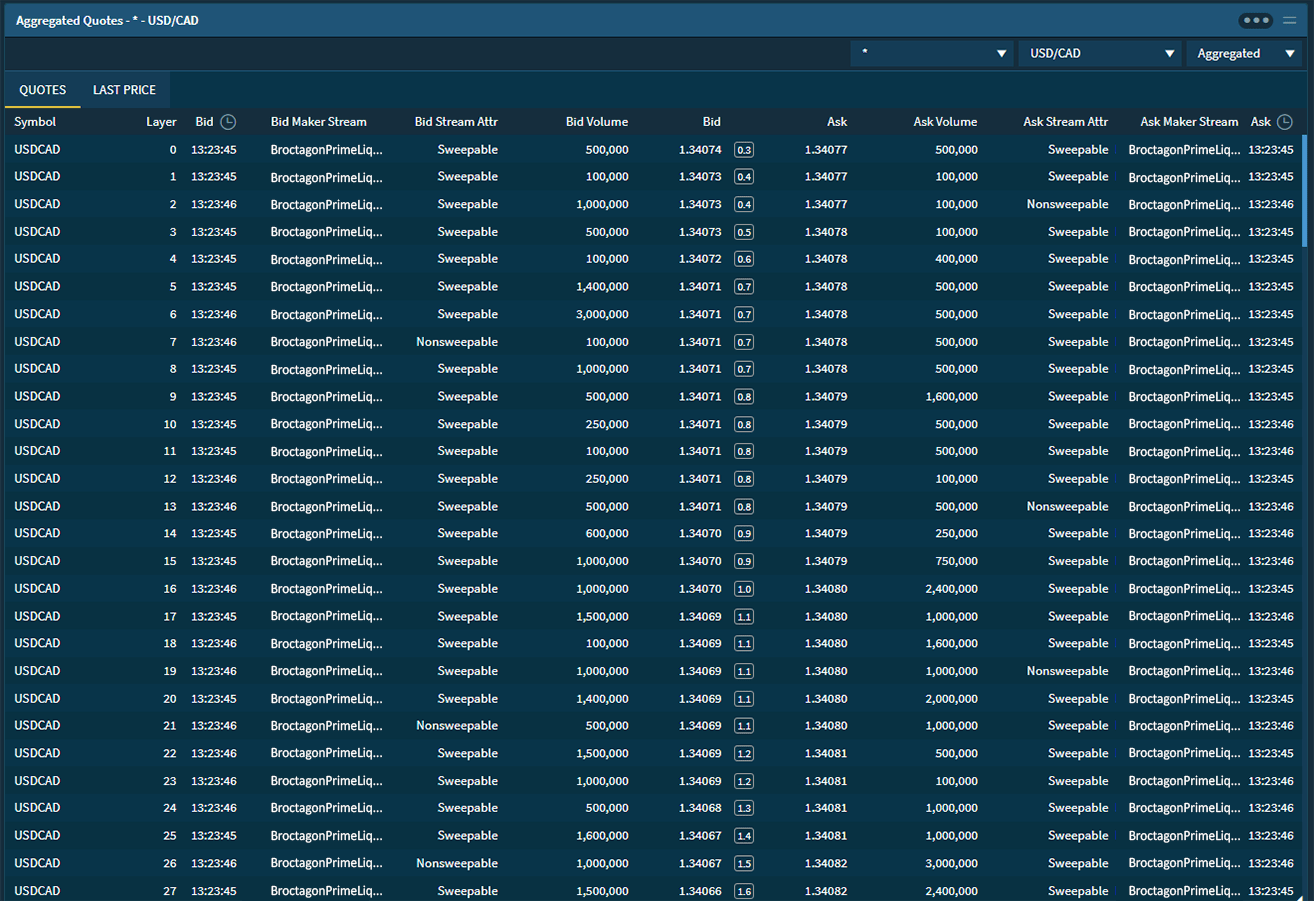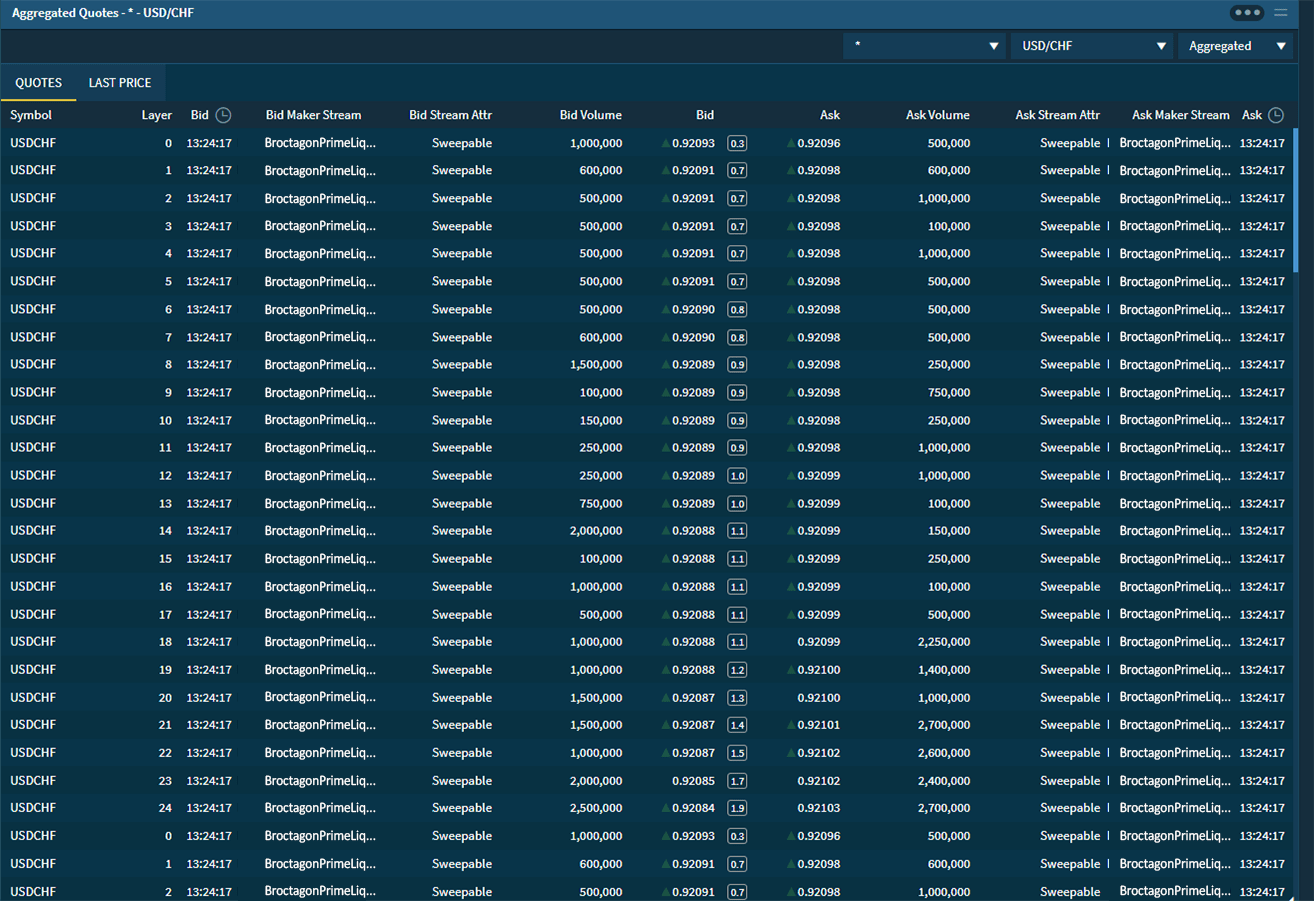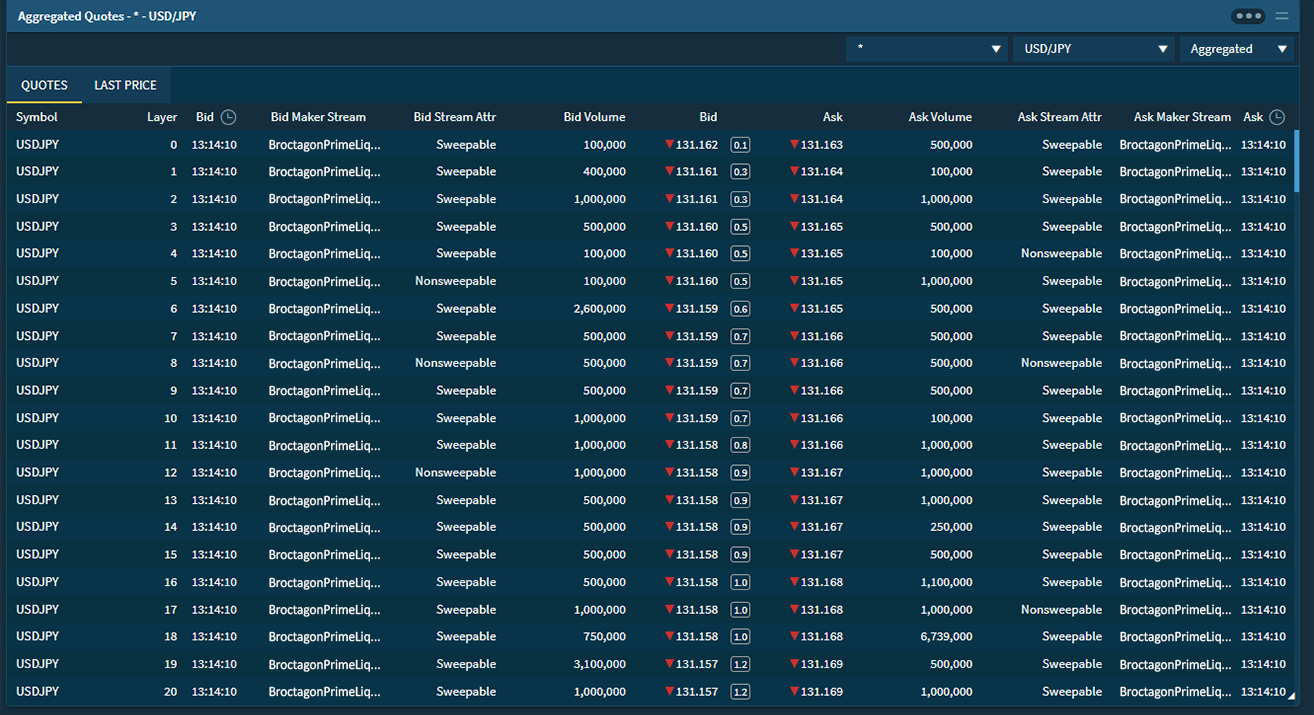In the foreign exchange (FX) market, liquidity providers and brokers work together to facilitate trading. Liquidity providers supply the market with tradable currency pairs and provide pricing information. Brokers, on the other hand, connect traders with liquidity providers and execute trades into the market, on their behalf.
Brokers may have relationships with multiple liquidity providers or they may choose to engage a single liquidity provider with aggregation technology to enable and display the best available bid and ask prices to their retail clients. This allows traders to access competitive pricing and deep liquidity, which can improve the speed and efficiency of their trades. In return, brokers may receive a commission or mark-up on the spread.
This collaboration between liquidity providers and brokers helps to ensure a liquid and efficient FX market for traders.
More about the role of a broker in the forex market
In the FX market, a broker is a financial intermediary that connects traders with liquidity providers and facilitates the execution of currency trades. The role of a broker in the forex market is to provide a trading platform, tools, and services that allow traders to access the market and execute trades with ease.
Some specific functions of forex brokers include:
- Providing a trading platform: Brokers offer online trading platforms that enable traders to place and manage trades. These platforms may be web-based, desktop-based, or mobile-based.
- Providing market data and analysis: Brokers often provide real-time market data and analysis to help traders make informed trading decisions. This may include charts, news, economic calendars, and other trading tools.
- Offering leverage: Brokers often allow traders to use leverage, which is the ability to trade large positions while using less margin. This can increase the potential profits from a trade, but also increases the risk.
- Handling order execution: Brokers are responsible for executing trades into the market. This involves matching buy and sell orders and transmitting them to the liquidity providers that they work with.
Brokers play a crucial role in the forex market by providing traders with access to the market, tools and services to help them make informed trading decisions, and executing trades accurately and efficiently.
More about the role of a liquidity provider in the forex market
In the forex market, a liquidity provider (LP) is typically a bank or licensed multi-asset financial institution that provides liquidity by offering buy and sell prices for currency pairs. The role of a liquidity provider in the forex market is to ensure that there is sufficient market depth for traders to buy and sell currencies at any given time.
On the other hand, brokers do not provide liquidity themselves, but rather bridge traders with liquidity providers and facilitate trade execution.
In this way, the role of a liquidity provider and a broker in the forex market are complementary.
What are some services provided by liquidity providers?
Liquidity providers (LPs) in the forex market provide various services to ensure that there is sufficient liquidity available for traders to buy and sell currencies and some of these services include:
- Pricing and execution: LPs offer pricing and execution services by providing buy and sell prices for currency pairs, allowing traders to buy or sell the currency at the current market rate.
- Access to deep liquidity: LPs offer access to deep liquidity, which is the ability to trade large volumes of currency without impacting the market price. This is particularly important for institutional traders who require large trade sizes.
- Market data and analysis: LPs provide market data and analysis to help traders make informed trading decisions. This may include real-time price quotes, historical data, charts, and economic calendars.
- Risk management: LPs provide risk management services to minimize the risk of currency exposure. This may include hedging strategies, risk assessment tools, and trade monitoring services.
- White label solutions: LPs offer white label solutions to brokers and other financial institutions who want to offer forex trading to their clients. This allows these entities to use the LP’s trading platform, liquidity, and pricing data under their own branding.
The services provided by liquidity providers are essential to the functioning of the forex market.
What are the Benefits of Working With a Broker and Liquidity Provider?
Brokers and liquidity providers play complementary roles in the forex market, and work together to keep the market running smoothly. Here’s how they typically work together:
- Liquidity providers provide buy and sell prices for currency pairs, which are made available to brokers and their clients.
- Brokers use their technology to aggregate the pricing data from multiple liquidity providers, and display the best available bid and ask prices to their clients.
- When a trader executes a trade, the broker transmits the order to the liquidity provider that offers the best price at that moment.
- The liquidity provider executes the trade and provides the broker with a confirmation of the trade.
- The broker then confirms the trade with the client, and the transaction is complete.
This process happens in a matter of milliseconds, and occurs thousands of times per second in the forex market. The close collaboration between brokers and liquidity providers is essential for traders to access the optimal trading conditions in the FX market.

